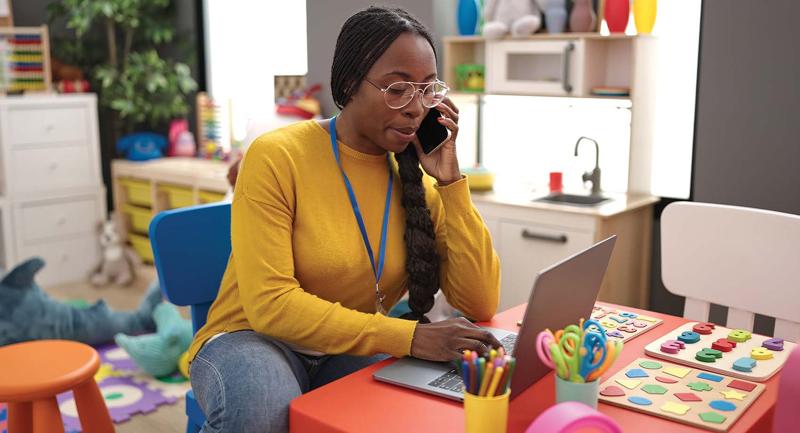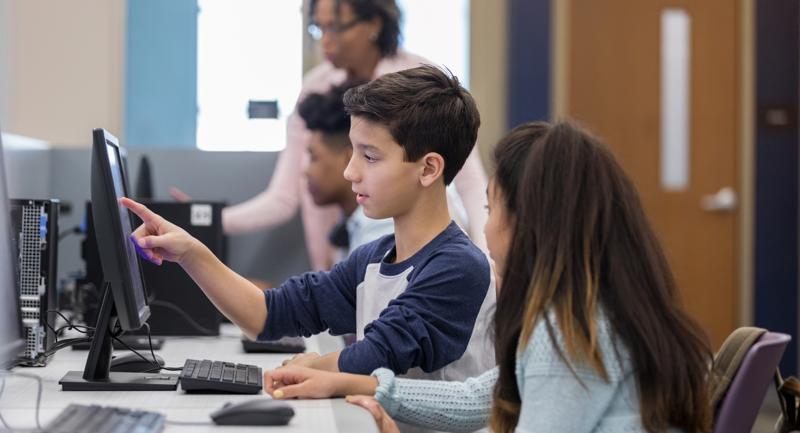As PTA president at my children’s school, I rely on social media to keep families informed about everything from sports and musicals to important school updates. But I’ve also seen firsthand how it can be distracting or be used to share comments that conflict with school values.
It is particularly hard to create a healthy digital school culture when school leaders have little control over removing content, such as confession accounts, fight accounts, and impersonation accounts. Confession accounts anonymously spread rumors about students, often related to relationships or personal matters. Fight accounts share videos of student altercations, sometimes encouraging violence. Impersonation accounts pose as teachers, students, or even the school itself, posting content meant to embarrass or mislead. These types of accounts can create a negative environment for students, staff, and administrators. Beyond targeting individuals, they fuel distractions that can ripple through the entire school, affecting students who aren’t even on social media.
But this is also a personal issue for me. This year, my teenage son was targeted on a confession account. I reported the account in the social media app, but it was not removed. The school principal also reported the account, as did the other students who were mentioned. No response.
If you’ve ever tried to report a confession account, you know that this experience is not unique to me. And even if you eventually get a post removed, if the process takes too long, the damage has already been done. Taking action on these types of accounts needs to happen quickly.
Taking Action
As the CEO of ISTE+ASCD, my team and I spend our days helping schools create amazing learning experiences for every student. We work with almost every district in the country. One of our key initiatives—and one of my personal and professional passions—is helping schools create healthy digital cultures while teaching students how to be upstanding digital citizens.
Prompted by the frustration of my son’s experience, I contacted schools in our network to see if they faced similar social media challenges. The message was overwhelmingly clear: social media is a great way to keep student communities connected and their families engaged and informed, but when inappropriate content emerges, it is hurtful and disruptive. School leaders are left with limited options to address the challenge and can feel helpless when reporting posts or attempting to have inappropriate accounts removed.
Working Together for Schools
Last year, the ISTE+ASCD team and I reached out to Meta (the company behind Instagram) to share the concerns we heard from educators across the country. We emphasized the need to give school leaders more control over social media content related to their school communities. We expected the idea to be dismissed out of hand, knowing how much of a lift this would be. But the team at Meta was receptive and interested in exploring solutions. What started as a single conversation evolved into designing a pilot program to give school leaders a more direct role in managing content related to their communities.
Over the past several months, a group of schools tested a version of Instagram that enabled partner middle and high school leaders to identify and report inappropriate or disruptive posts immediately. During the pilot, reports from school partners were prioritized for review, and schools in the program received status updates and real-time notifications when action had been taken on a report.
The pilot allowed schools to address inappropriate posts before they caused significant harm or grew into major distractions to learning. Confession accounts were also able to be reported and removed. As part of the pilot, ISTE+ASCD worked with the participating schools to support them in teaching their students about healthy social media use, including creating better norms for digital behavior, and using the new Digital Citizenship Lessons. Scaling the Solution
The pilot results were remarkable, with schools reporting a significant reduction in harmful content and improved digital culture. Justin Ponzio, principal at Buchser Middle School, shared:
Partnering with Instagram has been incredibly helpful in keeping our students and community safer online. I had an inside track and faster responses to reports of inappropriate behaviors online. As a principal of four years, responsible for over 700 students, I cannot stress enough the importance of new ways to keep kids safe in this changing world. I’m excited that more schools will get the chance to do this. I hope other technology platforms can also trust schools more and take down harmful posts.
Based on the pilot’s success, Instagram is now expanding the program to all middle and high schools nationwide. I’m very excited to share that, starting this past March, any verified middle or high school can qualify to participate in the Instagram School Partnership Program. This program allows school leaders to use social media to communicate with their school community while providing more control over potentially harmful content. Based on my experience as a parent, I’m genuinely grateful for this program. Participating schools will receive a banner on their profile so parents and students know they’re a verified Instagram partner school. When combined with setting effective digital use norms and teaching digital citizenship skills to students, this program empowers school leaders to create an uplifting and engaging digital community.
A Call for Continued Change
While this is a significant step in the right direction, I’m fully aware that social media continues to present challenges for students, parents, teachers, and school communities. It is essential that families create a healthy digital culture in their homes. In addition, other social media platforms have an opportunity to follow Instagram’s lead and give schools the controls they need to address harmful content and accounts on their respective platforms. I hope Snapchat, TikTok, and other social media platforms will join us in making it a priority to provide schools with better tools to protect students and maintain a positive online environment.
This article was sponsored by Instagram and produced by the EdSurge Solutions Studio team.








